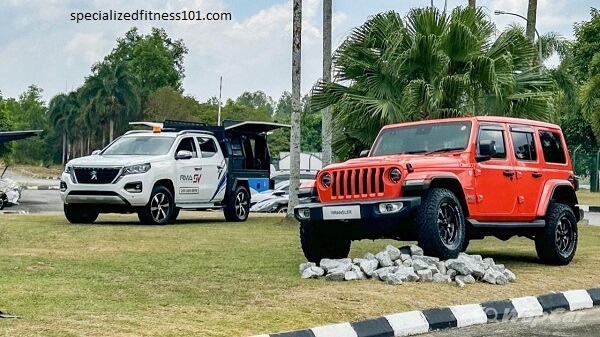Special Vehicle Fitting: Improving Accessibility and Utility:
Introduction
In today’s diversified world, the understanding of specific requirements for special vehicles has been growing. For instance, whether the fitting is disability-related, emergency, or industrial use, it serves a certain purpose. Moreover, such fittings make demands that no automobile as ordinary could meet. In this case, it can be noted that the growing demands for specialized vehicles have become more important.

Knowing the Importance of Special Vehicles:
Fitting:
Accessibility
Another considerable reason for this demand is accessibility. People who cannot walk properly find their transportation greatly aided. Most of the conventional vehicles lack the flexibility needed in order to accommodate a wheelchair, a mobility scooter, or other assistive devices. As such, fitting a vehicle to provide such facilities means enhancing independence and the quality of life among people with disabilities.
Emergency Services:
Fitting:
The special vehicles shall also enormously contribute to emergency services. Ambulances, fire trucks, and police cars require special fittings to perform their duties. Such vehicles are supposed to be fitted with specialized equipment, especially medical supplies, firefighting tools, and communication devices, to respond immediately to emergencies. Fitting assures the efficiency and safety in the operations of personnel within those vehicles.
Commercial and Industrial Applications:
Fitting:
Within the commercial industry, most industries have to rely on specialty vehicles in order to meet their operational needs. A construction company, for instance, would need to have heavy-duty trucks mounted with cranes or other equipment. Similarly, a delivery service may use automobiles that are fitted with refrigeration units to move perishable products. This kind of customization enables companies to increase their operations and be more efficient.
Types of Customizations for Specialty Vehicles:
Fitting:
Wheelchair Accessibility
One of the most obvious alterations for special-use vehicles is incorporating features of wheelchair access. They do so through ramps and lifts that ensure it’s very easy to access and exit such a vehicle. They can be hydraulic or manual, according to preference.
In addition, securement systems are essential, including ramps and lifts. Wheelchairs are effectively tied down and locked in place to ensure a sense of stability and peace of mind during transit for both the passengers and drivers.
Finally, depending upon various requirements, sometimes an adjustment of seating has to be made to accommodate additional passengers or make enough room for mobility aids.
Emergency Vehicle Fittings:
Fitting:
Emergency vehicles require specific fittings to ensure that they can adequately provide emergency services. These include modifications, which are designed to:
Emergency vehicles carry a special light and siren system to inform people on the road and provide them with an open passage in case of emergencies. There are special compartments to store medical equipment in ambulances so that first responders can easily access essential supplies needed for emergencies.

Communication Systems:
Fitting:
Emergency professionals require good-quality communication systems. Fittings may comprise radios, GPS, and other communication means to provide better coordination with the operation.
Commercial Vehicle Alterations:
Fitting:
Commercial vehicles are altered at various levels for it to be serviceable:
Cargo Management Systems: Delivery vans may be fitted with shelving, racks, and tie-downs for cargo secure transportation and to maximize interior space.
Specialized Equipment: Depending on the industry, vehicles could have specialized equipment such as refrigeration units for food service or perhaps construction tools for service trucks.
Custom Paint and Branding: In many businesses, people choose to fit their vehicles with custom paint jobs and branding to remind everyone of your services and increase your visibility.
The Fitting Process:
From Concept to Completion
Pre-Installation Consultation
It starts with a preliminary consultation. During this phase, the particular needs of the vehicle owner or organization are assessed. For instance, if it is a vehicle meant for a person with a disability, then a comprehensive evaluation of their mobility needs is necessary. In the case of an emergency vehicle, first responders may outline the needed equipment and features.
Design and Planning:
Once the requirements are set then comes the design and planning phase. This would encompass:
Blueprint Development:
Detailed development of blueprints of how all the changes are to occur.
Compliance with Regulations: Every fitting that is brought in must conform to local and national regulations, especially in case of emergency services use.
Material Selection:
Just as much as it is essential for durability and functionality the right materials should be chosen. For example, ramps may require lighter material, while emergency vehicle fittings need robust material.
Implementation:
Once the design, the implementation stage begins. The change is done by experienced technicians and engineers. This might consist of:
Structural Changes:
Depending on the kind of vehicle, structural changes will come into effect. These may range from the reinforcement of the frame so that additional equipment could be supported.
Electrical Fit-Up: Installation of lights, sirens or communications systems requires electrical fit-up to ensure safety and functionality.
Finishing Work: Finishing work is comprised of interior design work and custom branding to make the vehicle look pretty and user-friendly.
Testing and Quality Assurance:
Before handing back the ambulance to its owner, a thorough test drive is conducted to ensure that the modifications are all done correctly and safely. This might include a few critical evaluations:
Load Testing: This is especially when load testing is done on those ambulances using ramps or lifts to ensure that the desired weight is adequately supported by such systems.
Functional testing of the ambulances also checks if all the equipment contained in the vehicle, such as sirens and medical devices, is working efficiently and correctly.
Safety Inspections: Comprehensive safety checks are performed to confirm whether the vehicle meets all requirements and standards set for it.
Impact of Equipped Special Vehicle:
Enhanced Autonomy
Probably one of the biggest advantages special vehicles have is in promoting greater independence for people who may have some form of disability. Through special vehicles, disabled people can navigate a physical environment much easier and with more flexibility, get to and from work, pursue social lives, and participate more fully in their communities.
Emergency Response Improvement:
The use of fitted vehicles in relation to emergency services can go a long way toward improving response times and efficiency. Properly equipped ambulances and fire trucks may make the difference between death and life, contributing to the safety of the public.

Improved Business Performance:
As far as business applications are concerned, fitted vehicle equipment contributes to more efficiency and productivity in running business activities. Businesses can more effectively move goods and deliver services while being able to maintain a high level of safety standards.
